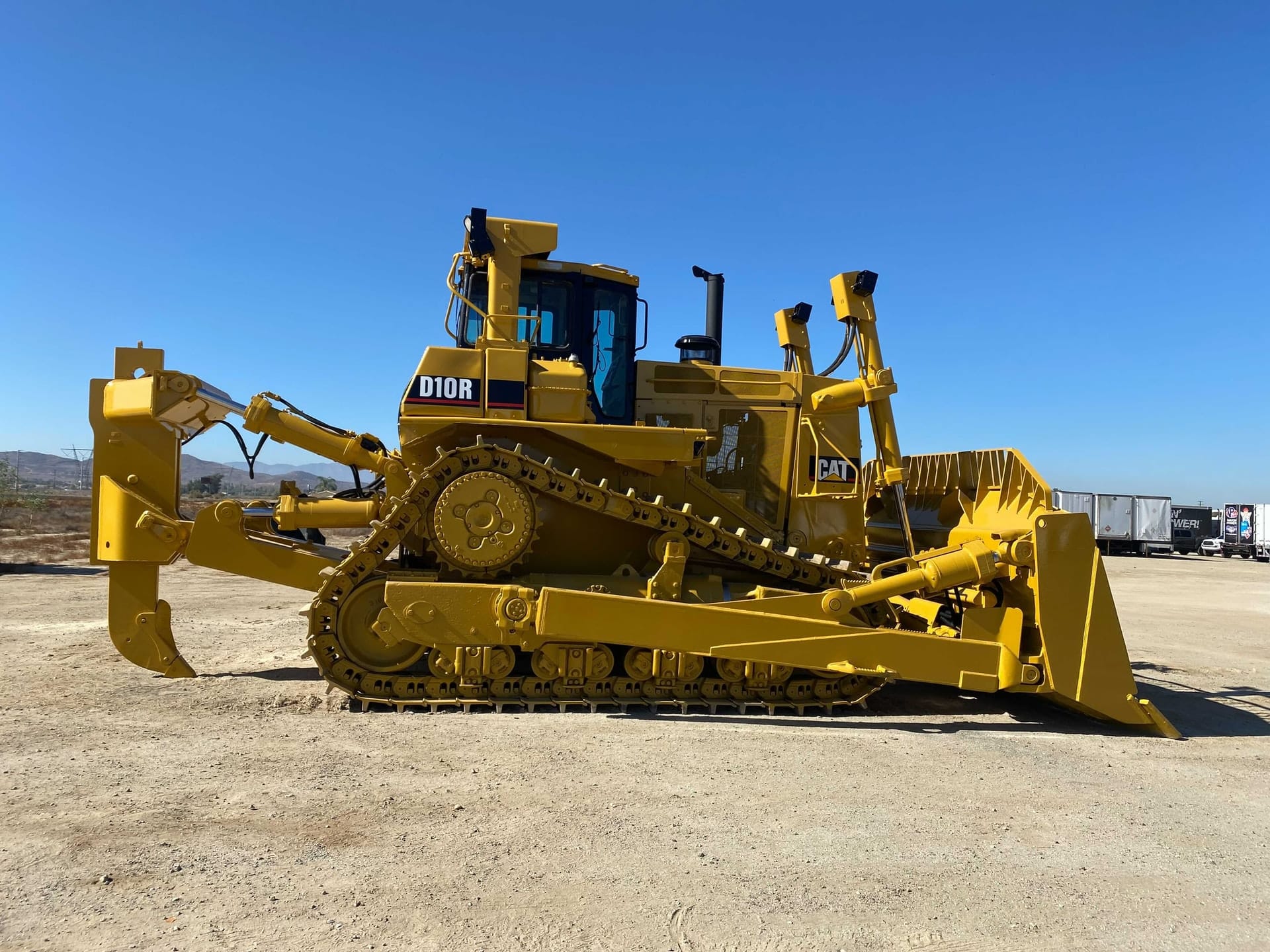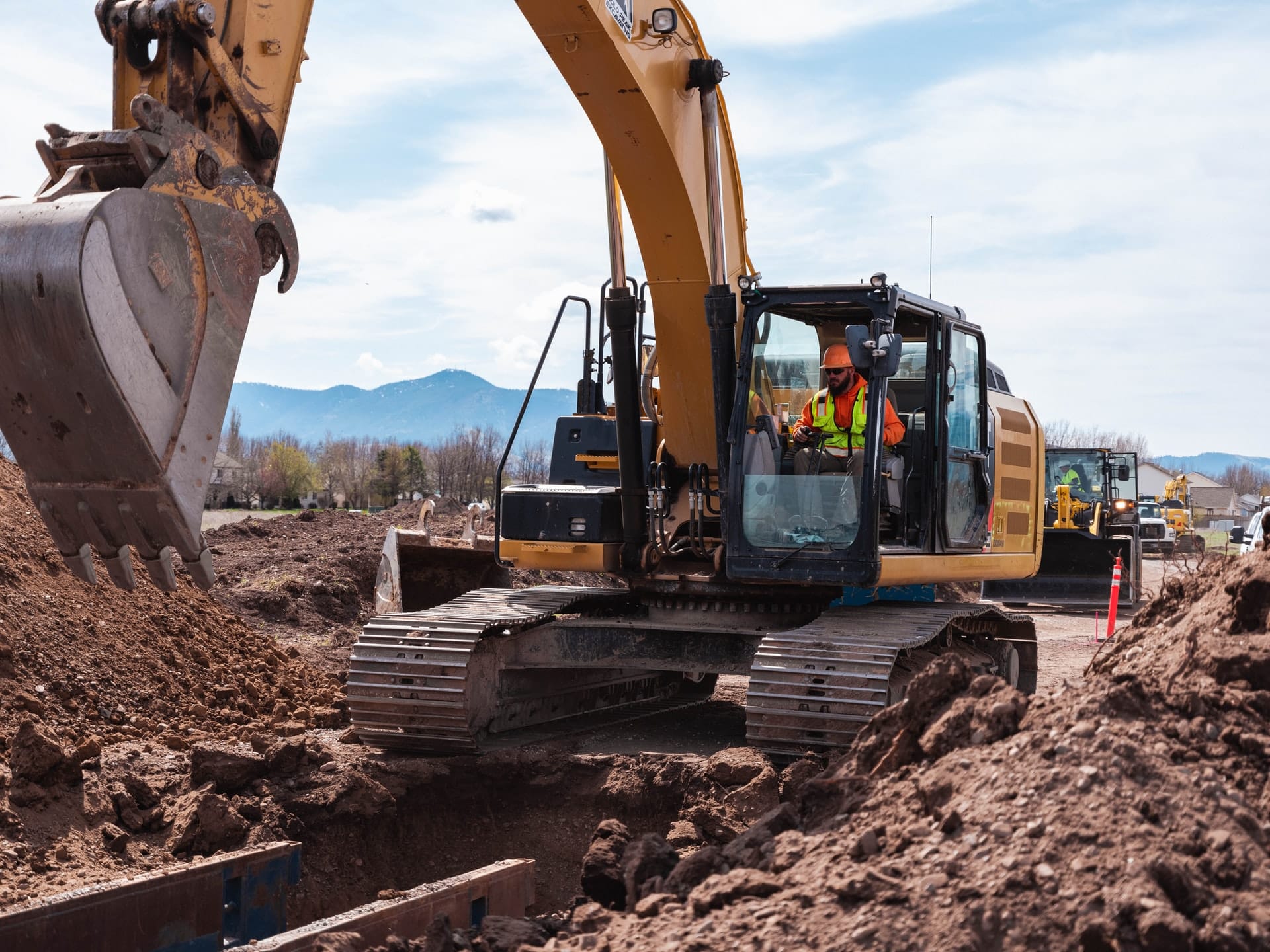What exactly comes to your mind when you hear the word "Caterpillar"? Is it Heavy-duty equipment? The Excavators, bulldozers, Loaders, and all the ruggedness and toughness one can think about? That's exactly what we think of when we hear the word "Caterpillar", too.
These widely perceived traits and the brand Image have combined to form a very distinct brand personality of Caterpillar. Which sets it apart from its competitors.
Alright, don't exert too much pressure on your brains; I'll tell you what Caterpillar we are talking about. Caterpillar is the leading producer of construction and mining equipment, diesel and natural gas engines, and industrial gas turbine components. The company is commonly known for its construction equipment.
This article will be fascinating since we will conduct a Caterpillar SWOT Analysis to investigate the internal and external factors affecting Caterpillar. Make sure to check out our PESTLE analysis of Caterpillar as well!
Caterpillar has been in the manufacturing sector for more than a century. When we look at its history, we get to know that in the late 1800s, Caterpillar's founding father, Benjamin Holt built a Harvester.
Initially, under the name of Holt Manufacturing Company, Benjamin Holt bought a plant in East Peoria, Illinois, and only focused on building tractors. Later in the 1910s, the company registered under the name "Caterpillar." From there onwards, Caterpillar started expanding its operations and never looked back.
Today, Caterpillar is the world's largest mining and construction equipment manufacturer. It managed to generate revenue of $51 billion in 2021. It provides equipment and services across the globe through more than 500 outlets worldwide.
The same Caterpillar that didn't even exist when its founding father started off by building the first engine has now produced more than 21 million engines. Isn't that awesome?
Guess how many Caterpillar products are at work currently across the globe? Are you thinking in thousands? It's way more than that. Currently, more than 4 million CAT products are at work.
Don't you feel looking at from where it all started to where it is now, this is a perfect success story? Well, we think the same, so we felt that conducting Caterpillar's SWOT analysis would be really cool!
Before we head towards the SWOT analysis, let us tell you a bit about SWOT analysis. You guys must be thinking that something complicated is about to turn up, but no, it is actually very simple and easy to understand.
SWOT analysis is a business tool that helps people analyze the strengths, weaknesses, opportunities, and threats an organization faces. It provides a complete insight into the organization in a very simple way.
Similarly, Caterpillar's SWOT template will highlight internal and external factors that influence Caterpillar's performance.
If you guys want a clear picture of what SWOT analysis is actually like, look at some examples of SWOT analysis.

Strengths of Caterpillar
Strengths are the positive aspects that a company possesses which help it increase its revenues and expand its operations. The strengths of any organization can be compared to the pillars that prop up a building.
Like any other organization, Caterpillar also has several strengths, due to which it has managed to emerge as the leader in the construction and mining equipment industry.
Large Portfolio of Products and Services
Caterpillar has a vast portfolio of products and services. The company is primarily known for its construction and mining-related products that include more than 300 machines and other equipment.
Regardless of the application, whether it is a locomotive engine, a Turbine, or industrial equipment, Caterpillar caters to the needs of its customers.
Besides that, Caterpillar also provides financial services to its customers that help them acquire capital for work. Such diversification allows Caterpillar to attain market share and avoid risks.
Strong Brand Image
Caterpillar's brand has been associated with high-quality products, and it has established itself as a highly reliable brand. Caterpillar offers high-quality products, and its customers find them worth the price charged.
For 17 consecutive years, Caterpillar managed to make its place in the top 100 best global brands list.
Caterpillar is a well-known brand with a great heritage, which has been built over several decades. Customers have confidence in the company because its products are innovative and efficient.
Such a strong brand image helps Caterpillar generate more revenue through an increase in sales each year.
Global Operations
To climb up to new heights of success, any organization must expand its operations across the globe.
Caterpillar has a massive and reliable distributor network that includes independent dealers selling Caterpillar products worldwide. With 161 independent dealers in 2020, the company had 46 dealers inside the US while the rest were outside the US.
Besides the dealers and distributors, Caterpillar has outlets in more than 500 locations worldwide and has 125 manufacturing plants across the globe. Such global reach provides Caterpillar an advantage over its competitors and makes it the leading construction equipment manufacturer.
Focus on Innovation
Caterpillar's R&D strategy has been critical in ensuring that the company can provide the best products and services at competitive market prices. Caterpillar's focus on innovation enables it to develop and manufacture equipment that improves productivity, reduces costs, and reduces emissions.
The company spent $1.7 billion on research and development in 2021 since it is critical to keep pace with the top trends in the industry to maintain a competitive edge.

Weaknesses of Caterpillar
While strengths and weaknesses are opposite, it's common for an organization to have both. So the first step to making strengths shine is knowing what holds you back. This way, you can focus on areas that require improvement and negate any weaknesses that prevent you from achieving your goals.
We have discussed the strengths of Caterpillar. Now it's about time to discuss some of its weaknesses since there are a few areas where Caterpillar can improve upon.
Dependence on the US Market
As a global company, Caterpillar focuses most of its efforts on the North American market, where the company is based. However, most of Caterpillar's sales and revenues come from North America.
In 2021, the US and Canadian markets accounted for around 43% of the sales revenue. Such dependence makes Caterpillar vulnerable to a slowdown in the US economy or a significant change in trade policies.
To reduce this risk, the company must increase sales in other markets like Europe, Latin America, and the Asia Pacific.
Weak Marketing
Good marketing strategies play a vital role in the success of a business. Although Caterpillar is considered a giant in the construction-equipment manufacturer industry, its marketing strategies are not up to the mark.
Caterpillar is growing day by day, but marketing is an area that could be improved. The current marketing strategy is working well in terms of product sales. Still, it could be more robust if more focus was on the product's unique selling proposition and positioning.
High labor Turnover Rate
Caterpillar has a high labor turnover rate. Employees working at Caterpillar tend to leave the organization after approximately 5.6 years. This means that the company has to continuously hire and train new employees.
Compared to other organizations in the industry, Caterpillar has a higher attrition rate which affects their profit margins adversely as they have to spend a lot more on training and development of their employees.
Opportunities for Caterpillar
Opportunities are situations that have the potential to cause growth for a business. Opportunities refer to the present, future, and existing opportunities available for a company to capitalize on.
This section will discuss the opportunities that lie ahead for Caterpillar to increase its market share and strengthen its position in the market.
Expanding to Emerging Economies
Emerging economies provide new growth opportunities to Caterpillar. High urbanisation and increased investment in infrastructure, population growth, migration to cities, and growth in disposable income are driving the growth of the construction equipment market in Asia and other regions.
An increase in construction in these emerging economies allows Caterpillar to expand its operation. This expansion will increase the market share of Caterpillar and increase its sales revenue.
Innovation Through Technology
Innovation is said to be one of the most important factors influencing a company's success in today's highly competitive environment. With technological innovation, a company can bring new equipment and technologies that help cater to the needs of its diverse customer segments better.
Over the years, Caterpillar's focus on innovation has increased. However, still, there is a lot of potential present to innovate by making full use of the technology.
This will not only increase the profits of Caterpillar since now it would be operating efficiently, but it'll also increase Caterpillar's market share since innovation will provide it a competitive edge.
Acquisitions
Acquisitions help companies to strengthen their market position in global markets. Caterpillar has made several acquisitions in its history. However, after a gap of 7 years, it acquired Marble Robot Inc in 2020.
This acquisition was a part of its automation and autonomy strategy. Making more such acquisitions could help the company strengthen its market position in global markets.

Threats for Caterpillar
Every organization has to face threats from the outside environment. If not countered on time, these threats can be damaging to the company.
In this section, we will discuss the different types of threats faced by Caterpillar and how they can be tackled.
Increasing Competition
Although Caterpillar is the biggest manufacturer of construction and mining equipment, the company still faces significant pressure from intensifying competition in the global markets.
The leading competitors of Caterpillar include Volvo, Hitachi, and Komatsu. While the higher competition, on the one hand, grows the company's operating expenses, it also limits sales opportunities and drives expansion-related pressures higher.
Increasing competition will affect Caterpillar negatively as the market share of Caterpillar will shrink; this will result in low profits.
Pandemic
The impact of the pandemic on Caterpillar's performance continued to be felt throughout 2020. In 2020, Caterpillar's sales revenue dropped 22% compared to 2019. This drastic drop was mainly caused by the lack of demand for construction products since the entire economic activity was on halt during COVID-19.
However, the pandemic is not entirely over yet, and the company can experience a similar situation shortly. In addition, the economic decline across several markets could continue to cloud the future of this industry.
Strict Rules and Regulations
Caterpillar is exposed to regulatory pressures in a large number of markets. From taxation to labor and product quality-related laws as well as the environment, businesses like Caterpillar have to abide by all rules and regulations to succeed.
Suppose Caterpillar fails to abide by the laws set by governments. In that case, it can cause the company heavy financial losses and hurt its reputation. Overall, regulatory pressures in many markets can be a significant impediment to growth for Caterpillar.

Caterpillar SWOT Analysis: Final Thoughts
To summarise what we have discussed in this article, let's start from the beginning. We started off with this article by introducing you guys to the leading construction-equipment manufacturer company Caterpillar.
After you got to know a bit about the company and its current operations, we shared its rich history with you so that you guys know the journey of Caterpillar and the reason why we chose this company for SWOT analysis.
Then we proceeded towards the SWOT analysis, where we discussed some of the strengths, weaknesses, opportunities, and threats that affect the growth of Caterpillar.
Although In this article, we conducted the SWOT analysis in the form of an essay, the internal and external factors discussed in this article can also be represented in a SWOT Matrix. This is the more efficient way to express the findings of a SWOT analysis. Since we've almost reached the end of this article, we will assume that after going through this article now you are aware of the internal and external factors affecting Caterpillar. Besides that, we guess that now you also know how to conduct a SWOT analysis.









